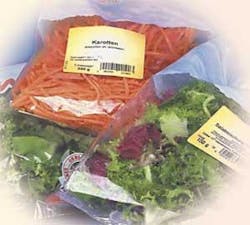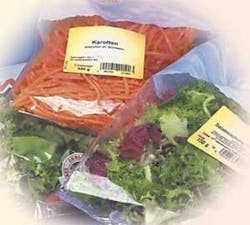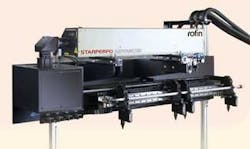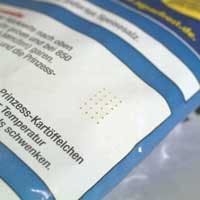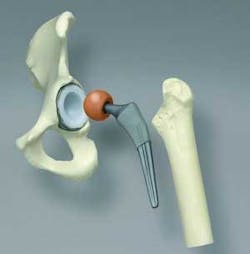Cologne, Germany—At Anuga FoodTec, the international trade fair for food and drink technology, held here, Rofin presented a new solution for web movement compensation for laser perforation of packaging. The Web Movement Compensation (WMC) system (see FIGURE 1) encompasses a speed range from 0 to in excess of 500m per minute. As such, it covers requirements during the whole process from immediately after start up to complete standstill.
When the laser pulse hits the fast-moving material the quality of the hole may not be as required. If pulse duration and web speed exceed certain values, the holes become visibly oval. There is insufficient energy left for complete perforation of the material. In many cases, material that has been produced at high speeds is not accurate enough to allow the specified air exchange and is therefore unusable. To overcome this issue the web speed is reduced, resulting in higher production costs. Rofin's (Starnburg, Germany; www.rofin.com) WMC system cuts material waste and can quadruple achievable web speeds. Furthermore, the WMC technology allows satisfactory perforation on materials that historically could not have been processed at profitable rates, such as thick films (>100 microns) or films comprising sophisticated material combinations.
Packaging technology demands precision control of perforated hole dimensions. The shelf life of fresh food can be considerably enhanced by optimizing the size of the hole (see FIGURES 2 and 3). Profitability increases as quality is maintained regardless of the speed at which the product is perforated. A longer shelf life results in less waste being disposed of. The outcome of this is lower costs and hence more attractive pricing. What's more, the growth in markets such as health foods and snacks has driven the requirement for attractive presentation, alongside an extended shelf life of organic fruit, vegetables, nuts, dried fruit, and cereals. An additional requirement has also arisen for multi-chamber trays for multi-component snacks; each chamber requires perforating differently to optimize the storage life of the ingredients within that particular chamber.
Rofin can carry out customer-specific trials under real winding conditions at its in-house applications lab. The optimum parameters can be investigated by Rofin application engineers before the visit. Customer presence at the applications trial is welcomed, as this enables all technical options to be investigated in order to meet customer requirements.
Lake Bluff, IL—Galloway Plastics Inc. (GPI) is using an EOSINT M 270 direct metal laser sintering (DMLS) system as part of a larger business strategy to support the expansion of GPI Prototype and GPI Anatomicals.
For GPI Prototype, a complete service bureau, the equipment from EOS GmbH Electro Optical Systems (Krailling/Munich, Germany, and Novi, MI; www.eos.info) will broaden its in-house offerings. GPI Anatomicals, reportedly the largest manufacturer of anatomical/medical device models, will use it to further expand its core orthopedic device capabilities.
“We see DMLS as a huge step toward eliminating the gap between prototyping and production,” says Scott Galloway, president and owner of GPI. “Also, with it we can create parts that would not be possible to manufacture using traditional methods.”
This additive manufacturing process starts with a CAD file that defines each layer of a cross-sectioned model. 20- to 40µm thin layers of metal powder are deposited onto a build platform and laser sintered by a focused laser beam. The platform is then lowered and the process repeated layer-by-layer until a three-dimensional metal part is produced. DMLS can “grow” parts—even those with extremely complex geometries—in just a few hours.
The M 270's abilities for mass customization and building of intricate shapes make it suitable for the orthopedic, device implant (see photo), and aerospace markets. GPI will be using DMLS in these fields as well as creating device tooling, tooling inserts for molds, and short-run or custom-metal parts for field use.
